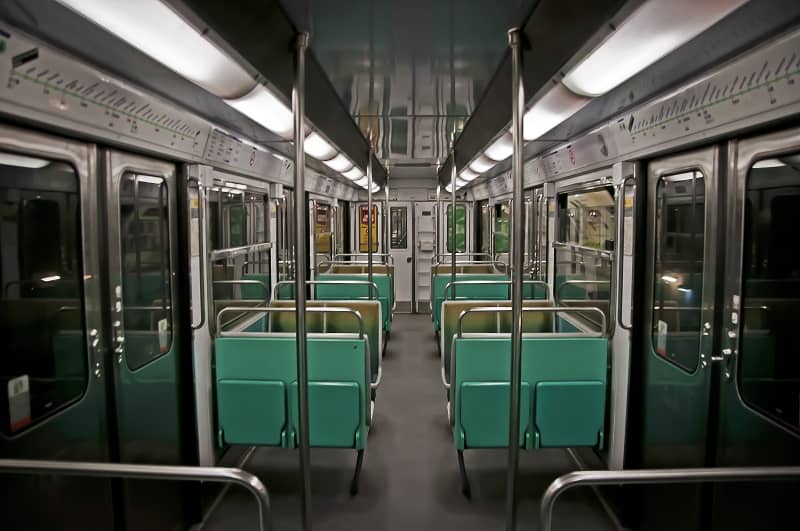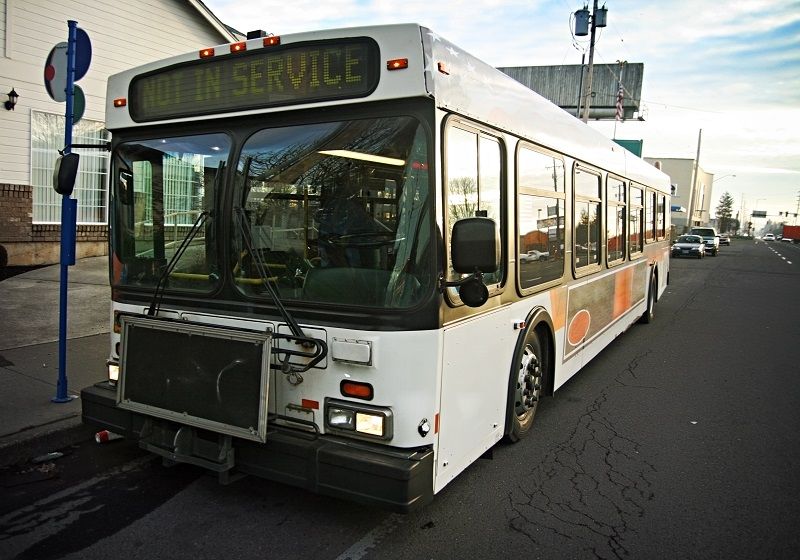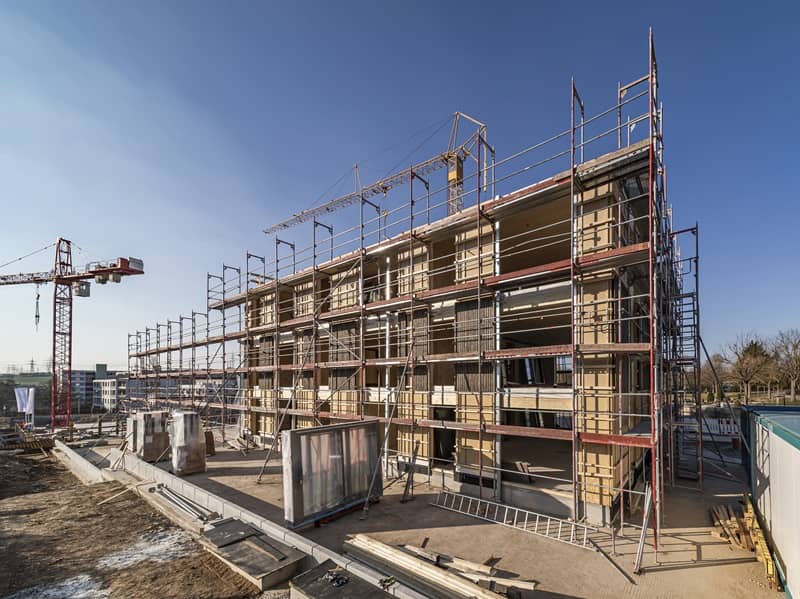May 12, 2025
Joint Committee on Transportation
Oregon State Legislature
State Capitol
Salem, OR
Dear Co-Chairs McLain and Gorsek:
I am writing in opposition to SB 1182.
This legislation appears to be the result of the Partnership Agreement between the Oregon Transportation Commission and Albina Vision Trust approved by the Commission on March 14, 2024. The purpose of the Partnership Agreement was to create a plan for future cooperation related to real estate development on the planned highway cover on I-5 in the Rose Quarter.
The proposed cover, as described in the Supplemental Environmental Assessment, will support construction and ownership opportunities that will likely violate state and federal laws prohibiting discrimination on the basis of race.
Before the Joint Committee on Transportation votes on SB 1182, I hope you and your colleagues will carefully consider the implications of the Partnership Agreement.
Background
The Rose Quarter I-5 highway cover being promoted by the Oregon Department of Transportation will give the entirety of development and lessee/ownership rights to either a mix of Black owned businesses and individuals or to a single Black owned corporation.1
However, ODOT has never been clear about what injury this affirmative action plan is in response to. It may be responding to current society-wide racism that Oregon’s Black population experiences, or the perceived harm from the planned I-5 auxiliary lanes, or harm from the decades old I-5 construction suffered by certain members of the Albina neighborhood. 2
While it is unclear what spawned these proposals, only the last of these could ever justify this racially discriminatory policy, as the first two are either not specific to Black Albina residents or not addressable via affirmative action. The Supreme Court’s majority explained why in Fair Admissions v. Harvard when they wrote, “ameliorating societal discrimination does not constitute a compelling interest that justifies race-based state action.”3
Affirmative action policies are not illegal or unconstitutional on their face, however ones that use strict racial categories to distribute benefits or rights have traditionally been reviewed by courts with the “strict scrutiny” judicial standard.4 Because this proposal would involve deciding ownership or leasing rights on the cover by a strict requirement of the purchaser being Black, the Legislature has the burden of proving that the category plan is narrowly tailored to serve a compelling governmental interest.
If ODOT claims that the policy is to heal the decades of alleged harm I-5 caused to the Albina neighborhood, it would be up to individual fact-finders to consider whether addressing that injury in this way was sufficient to meet the difficult “compelling government interest” standard.
Regardless of that, ODOT would also have to prove the policy was narrowly tailored. Since ODOT did not consider any policy alternatives that would avoid racial categories, the proposals are unlikely to meet the narrowness requirement.
Proving nonracial alternatives both wouldn’t work and were adequately considered is a necessary step which ODOT has not attempted. An obvious alternative would be to encourage Black ownership rather than requiring it. Since the Rose Quarter cap proposal fails to account for alternatives and seems to overcompensate for the alleged harm the Albina Black community has suffered, it is likely this plan would be struck down by a court of law if it was challenged.
Relevant Factors
The first and most relevant factor is the purpose of the Rose Quarter cap plans, and second is what the plans intend to do. As explained earlier, the goal can’t simply be compensating for general racial inequality. The Oregon Department of Transportation calls the project “restorative justice”, and Appendix A of the ODOT community conceptual design report states that the specific injury being addressed was the creation of I-5 and its impacts, including the splitting up of the Albina neighborhood.5
If that is the motivating injury then it is undercut by the fact that the neighborhood’s status as historically Black was partially due to housing segregation.6 In addition, the allegations that it was I-5 which led to the decline of the Black population from over sixty percent of Albina to less than a quarter are weak. This is because the Black population in Albina appeared to have been stable and increasing immediately after I-5’s completion in 1966 and only began to steadily decline in the decades after.7 8 It seems that Albina’s supposed injury was very gradual and thus could be from a large variety of factors.
Other potential injuries cited are that of the lane expansion, but this is not a valid source for a Black targeted affirmative action plan. As ODOT explained in its 2022 Supplemental Environment Assessment, of those within the lane expansion’s area of impact over eighty percent are White and less than five percent are Black.9
What’s more is a larger number of Hispanic/Latino and Asian Portlanders would be affected by the project than Black residents, and yet the restorative justice plan ignores the injuries to other ethnicities or races.
If this is the injury the cap addresses, then the program should be color blind or include other minority groups. The I-5 cover plan fails at restoring the injury from the ongoing expansion and, as explained earlier, can’t compensate for societal racism. Thus the only appropriate injury for the plan to offset is the harm that the original I-5 construction caused.
The various Rose Quarter highway cover proposals described in the Environmental Assessment all establish a race-based requirement to control the land/air rights. The ODOT’s Appendix A conceptual design report says “stakeholders indicated that it would be important for […]ownership and […] development rights […] to sit with a Black-led governing entity” and continues, “The process to convey these lands could be determined […] with the governing entity of the highway covers representing the Black Historic Albina community.”
The leader of Albina Vision Trust has stated that the “Black community should be able to have both the land on the freeway caps and the jobs that come with building them.”
ODOT’s Appendix B Conceptual Design Assumptions Summary states that a “Black-led community development corporation” and “Black-controlled community land trust” would control the property and development.10 This would qualify as an outright denial of opportunity to lease or develop the I-5 cover to Portlanders and Albina residents who aren’t Black, based solely upon their race, which raises equal protection and other civil rights issues with all of the cap proposals.
Equal Protection/Federal Civil Rights Analysis
When determining whether the proposal violates equal protection guidelines the first question that needs to be asked is: Is this racially discriminatory, and to what degree? Both of these are necessary steps because not all affirmative action programs are considered per se unconstitutional.
The Supreme Court decided in Richmond v. J.A. Croson that affirmative action cases should be considered under the strict scrutiny standard of review. The Court went on to state “the purpose of strict scrutiny is to “smoke out” illegitimate uses of race by assuring that the legislative body is pursuing a goal important enough to warrant use of a highly suspect tool.”
Applying the strict scrutiny test means that an affirmative action policy must be narrowly tailored to meet a compelling government interest, because unequal treatment based on race is assumed suspicious when done by any government body. To determine whether this test is passed by the I-5 cap proposals we have to assess what is a compelling government interest, because it makes more sense to begin determining whether the government interest is proper before determining how narrow the proposed policy should be.
Affirmative action policies always have the purpose of counteracting preexisting discrimination and disadvantages, and when reviewing these policies courts have to balance this with the equality before the law principles of the 14th amendment’s equal protection clause. The conflict is that governments want to help those who have been hurt by discrimination, but the Fourteenth amendment forbids denial of equal protection of the law, which courts interpret to forbid racial discrimination with few exceptions.
Similar to the plan in Richmond, the proposed I-5 cover development plans seek to relieve a six-decade old injury, and make no distinction between Black Albina residents who were actually injured by I-5’s construction and those who have moved there within the past six months.
The racial distinction might be constitutionally acceptable if there was no alternative method of identifying those harmed by the I-5 construction through Portland, but that is not the case here. The city could instead track down the families or owners who had their property seized during I-5’s construction and compensate them, or give first purchasing rights to those who have proof of long-term residence in the Albina neighborhood.
Both of these distinctions would be able to avoid a racial classification and appear to achieve the same goal as the chosen plan in a more narrowly drawn way.
Thus the “narrowly drawn” requirement of affirmative action policies is not present in the ODOT cover plan. Anyone prohibited from buying/leasing property on the cap might bring suit raising 14th amendment equal protection issues.
While it is still uncertain whether the impact of I-5 construction, both past and future, amounts to justifying the government interest in racializing the cap’s ownership, the proposals here are clearly not narrowly tailored. This becomes obvious when one looks at the absence of any mention of the ways a racial category-based plan might be avoided through alternative policies.
Oregon State Statutory and Constitutional factors
While Oregon statutes do encourage or require affirmative action policies, they are confined to hiring policies or similar internal issues, such as ORS 243.305. Even if these statutes applied to this situation, they would only restrict the state rather than empower it, and a federal equal protection claim would override state policy regardless.
Another potential claim someone denied the right to lease or develop based on race might raise is a state level racial discrimination issue. While the Oregon Constitution does not have a clause disallowing racial discrimination, ORS § 659A.421(2)(a) outlaws discriminating against a prospective property renter, lessee, or purchaser based upon their race, and this would likely conflict with the Rose Quarter cap proposals.
Regardless of whether the claim is federal or state, the fact that colorblind options were not considered in forming the cap leasing and development proposals seriously undermines the plans.
Sincerely,
John A. Charles, Jr.
President & CEO
1 Oregon Department of Transportation, Appendix A// CONCEPTUAL DESIGN REPORT,
https://www.iSrosequarter.org/pdfs/independent cover assessment/AppendixA ConceptualDesignSce narios 1lxl 7. .PQf
2 Rachel Monahan, Gov. Kate Brown Wins Agreement From Local Elected Officials for Rose Quarter Project With Highway Caps,
https://www.wweek.com/news/state/2022/02/10/gov-kate-brown-wins-agreement-from-local-elected officials-for-ro se-quarter-project-with-highway-caps/
3 STUDENTS FOR FAIR ADMISSIONS, INC. v. PRESIDENT AND FELLOWS OF HARVARD COLLEGE
https://www.supremecourt.gov/opinions/22pdf/20-1199 hgdj.pdf
4 “Any exceptions to the Equal Protection Clause’s guarantee must survive a daunting two-step examination known as “strict scrutiny,” Id. at 4.
5 Oregon Department of Transportation, Appendix A II CONCEPTUAL DESIGN REPORT, https://www.iSrosequarter.org/pdfs/independent cover assessment/AppendixA ConceptualDesignSce narios llx17. pdf
6 Organizing People/Activating Leaders, Environmental Justice FAQs https://www.opalpdx.org/ej fags
7 Chris Bodenner, Gentrification in Portland: Residents and Readers Debate, The Atlantic, https://www.theatlantic.com/national/archive/2016/08/albina/623360/
8 Red G.Rick, The Gentrification of Albina,
https://storymaps.arcgis.com/stories/Se3196e07fbe48e092c495c052f2ef6f
9 Oregon Department of Transportation Et. Al., I-5 Rose Quarter Improvement Project Supplemental Environmental Assessment,
https://www.iSrosequarter.org/pdfs/sea/supplemental environmental assessment 508.pdf
10 Oregon Department of Transportation, Appendix B II CONCEPTUAL DESIGN ASSUMPTIONS SUMMARY,
https://www.iSrosequarter.org/pdfs/independent cover assessment/AppendixB ConceptualDesignAss umptionsSum mary.pdf.












